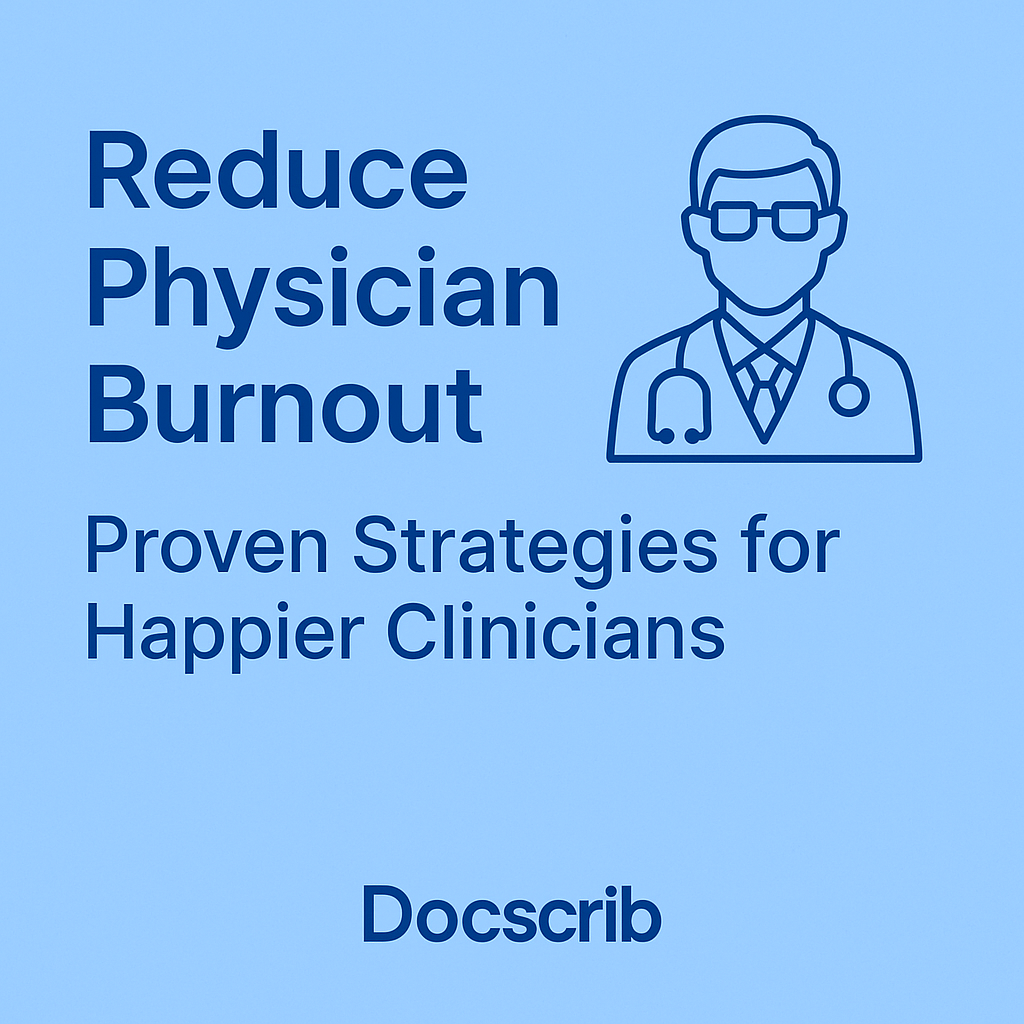Physician burnout isn’t just a buzzword — it’s a crisis affecting nearly 63% of doctors in the U.S. according to the AMA. Long hours, overwhelming documentation, administrative burden, and emotional fatigue are driving healthcare professionals to the edge.
But there is a way forward. At DocScrib, we believe that smarter technology — especially AI medical scribes — can help clinicians regain control of their time and well-being.
This comprehensive guide explores actionable strategies to reduce physician burnout, improve clinician satisfaction, and build a healthier, more sustainable practice environment.
What Is Physician Burnout?
Physician burnout is a state of emotional, mental, and physical exhaustion caused by prolonged workplace stress. It manifests through:
-
Emotional exhaustion
-
Depersonalization (feeling detached from patients)
-
Reduced sense of personal accomplishment
The consequences? Higher turnover, decreased patient satisfaction, clinical errors, and rising healthcare costs.
Top Strategies to Reduce Physician Burnout
1. Adopt AI Medical Scribes to Eliminate Documentation Overload
Documentation is one of the biggest pain points for physicians. Studies show doctors spend over 15 hours per week on paperwork — time that should go toward patient care.
AI medical scribes like DocScrib solve this by:
-
Capturing patient-doctor conversations in real time
-
Automatically generating SOAP notes
-
Seamlessly integrating with major EHRs
✅ Result: Up to 80% reduction in documentation time.
📌 Internal link: Explore AI Medical Scribes
2. Promote Work-Life Balance in Medical Settings
When physicians are chronically overworked, burnout becomes inevitable. Solutions include:
-
Flexible scheduling and part-time options
-
Telehealth integration
-
Protected time for rest and recovery
-
Encouraging vacations and mental health days
Organizations that offer flexible models often report improved morale and reduced turnover.
3. Redesign Clinical Workflows for Efficiency
Many physicians are burdened with redundant clicks and inefficient tools. Simplifying workflows can dramatically improve job satisfaction.
Key approaches:
-
Streamline EHR systems
-
Automate non-clinical tasks (scheduling, billing)
-
Delegate administrative duties to support staff
-
Use voice-to-text technology for faster charting
🧠 Pro Tip: AI tools like DocScrib enable physicians to spend more time with patients and less time staring at a screen.
4. Invest in Mental Health Support for Clinicians
Just like patients, clinicians need access to quality mental health resources. Offer:
-
Confidential therapy or coaching
-
Peer support groups
-
Burnout prevention training
-
Regular well-being check-ins
Healthcare starts with the health of providers.
5. Foster a Culture of Peer Recognition and Leadership Support
A supportive environment is one of the most underappreciated burnout reducers. Cultures that reward collaboration, provide career development, and actively listen to clinician concerns see:
-
Lower stress
-
Higher team morale
-
Better retention
Empower leaders to model healthy work habits and acknowledge clinician contributions.
How AI Medical Scribes Drive Happier Clinicians
The intersection of technology and empathy is key.
By offloading time-consuming tasks, AI medical scribes allow doctors to:
-
Reconnect with patients
-
Reduce screen time
-
Lower cognitive load
-
Get home on time
And unlike human scribes, they scale effortlessly across teams and specialties.
👉 CTA: Schedule a free DocScrib demo now
Conclusion
Physician burnout isn’t inevitable — it’s preventable.
By leveraging smart tools like AI medical scribes, building flexible workplace policies, and supporting clinicians holistically, healthcare organizations can turn the tide.
At DocScrib, we’re committed to happier clinicians and better care.
✨ Ready to reduce physician burnout in your organization?
➤ Learn more at DocScrib
